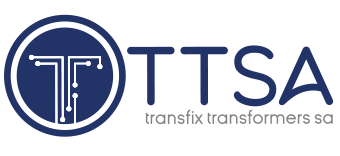In anticipation of the formal launch of the South African Wholesale Electricity Market (SAWEM) and the Balance Responsible Party (BRP) framework, engineering business and IT enabler for the electricity sector Enerweb has been actively preparing its clients for BRP requirements. Set to launch in April 2026, SAWEM is being established to replace State-owned power utility Eskom’s single-buyer monopoly model with a multi-buyer, multi-seller system, aiming for cost-efficiency and price transparency.
The 10 MW Maxwell solar plant, which represents a “ground-breaking step” in Namibia’s transition to renewable energy and “serves as a model for future public-private power partnerships”, has been commissioned, says solar asset management company Sustainable Power Solutions (SPS). The company, in partnership with gold mining company B2Gold Namibia, Maxwell farm owners the Oelofse family and local property developer Fortitude, has successfully commissioned Namibia’s first solar wheeling project under national electric power utility NamPower’s modified single buyer (MSB) programme.
Pele Energy Group reaffirmed its commitment to inclusive and sustainable energy development during the Global Citizen NOW: Impact Sessions held in New York. Representing South Africa and the African private sector, Pele Energy Group CEO Gqi Raoleka joined European Commission President Ursula von der Leyen and Global Citizen CEO Hugh Evans in a landmark discussion on the role of the private sector in accelerating Africa’s just energy transition. Raoleka underscored that achieving universal energy access demands collaboration, innovation and investment across borders. His participation highlighted Pele Energy Group’s belief that Africa’s transition to clean energy must not only expand renewable capacity but also empower communities through education, skills development and sustainable enterprise.
Although the virtual wheeling power purchase agreement (PPA) between telecommunications company Vodacom and renewable energy company SOLA Group draws inspiration from international corporate PPA models, it is uniquely South African in design, says SOLA Group MD of Commercial, Jonathan Skeen. He explains that although the virtual wheeling PPA reflects global best practice, it has been tailored to the realities of State-owned power utility Eskom’s grid and regulatory framework, creating a first-of-its-kind solution in an African country.
Civil society anticorruption lobby organisation the Organisation Undoing Tax Abuse (OUTA) welcomes State-owned power utility Eskom’s decision to ease red tape around the registration of residential solar and battery energy systems. The organisation says this is a long-overdue step toward less onerous conditions for the registration process required by Eskom.
South Africa’s R440-billion transmission grid expansion programme has attracted interest from international developers, including a company owned by Indian billionaire Gautam Adani and Chinese firms. The continent’s most industrialised nation started up the Independent Transmission Projects program in December to bring in private partners to help install 14 000 km new power lines. The government aims to add 34 gigawatts of generating capacity from wind and 25 gigawatts from solar over the next 14 years, and will require more connections to an already constrained system.
The bottlenecks in South Africa’s national transmission grid, referred to as gridlock, are a major concern for the country’s wind power sector. This was highlighted during a panel discussion on the first day (Wednesday) of the Windaba 2025 conference, being held at the Cape Town International Convention Centre. Gridlock is hampering the connection of new renewable-energy sources to the grid. “The grid is a massively important issue,” affirmed South African renewable-energy company Anthem CEO James Cumming. He expects to see another period in which renewable-energy generators will have to wait for the grid to get the capacity to accommodate them, before they will be able to connect with it. He urges renewable energy and the other relevant entities to work together to create combined grid applications that have sufficient scale to make a grid connection credible.
Seriti Green CEO Peter Venn says the ease with which individuals with deep coal industry experience have transitioned into renewable energy has been a remarkable aspect of the company’s recent progress in implementing its first large-scale wind projects in the coal region of Mpumalanga. Seriti Green is majority owned by Seriti Resources, a black-owned coal mining company that has also contracted for all of the 500 GWh of electricity to be produced yearly from the first 155 MW phase of the Ummbila Emoyeni Wind Farm for its eight coal mines.
The recently released details regarding the Integrated Resource Plan (IRP) 2025 have been welcomed by the South African wind energy sector. The new IRP provided for 34 000 MW of onshore wind generation capacity by 2039. “I think the IRP is a great step forward,” affirmed local renewable energy company Seriti Green CEO Peter Venn. “Wind projects take nine years to pout on the grid and then 20 to 25 years to operate.”
The process to lift South Africa’s dormant pebble-bed modular reactor (PBMR) project from care and maintenance is at an advanced stage, says Minister of Electricity and Energy Dr Kgosientsho Ramokgopa. The research programme into what was essentially the development of small-scale nuclear power stations was shuttered in 2010, owing to a number of reasons, including escalating costs.
INDUSTRY NEWS
WHERE TO FIND US
Address
9 Yellow Street
Botshabelo Industrial Area
Botshabelo, Free State
Call / Email Us
Tel: +27 (0) 61 956 6772
Email: info@transfix.co.za
